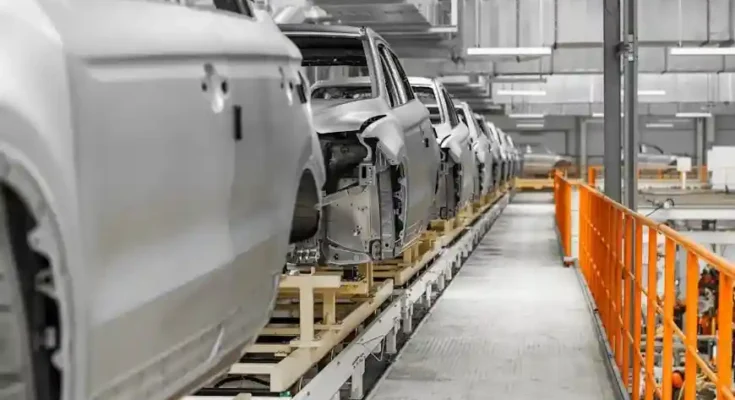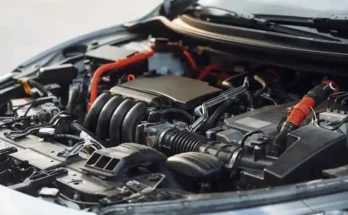The Automobile Revolution:
It wasn’t too long ago that a car was simply a tool to get from point A to B. It had four wheels, a steering wheel, and a roaring engine under the hood. But in 2025, automobiles have become something far greater—a symbol of innovation, sustainability, and intelligence. They’re no longer just mechanical marvels; they’re high-tech companions on the road of life.
The evolution of the automobile isn’t happening in the slow lane either. It’s racing forward with autonomous features, electric drivetrains, AI-enhanced safety, and mobility reimagined. The question is no longer what’s under the hood, but what’s behind the code. Let’s take a ride through the winding road of change in today’s automotive world.
Electrification Takes the Wheel:
-
EVs Are No Longer a Novelty
Electric vehicles (EVs) are no longer the future—they are the present. Major manufacturers, from legacy giants like Ford and Mercedes to EV pioneers like Tesla and Rivian, have committed to all-electric lineups within the next decade. In 2025, it’s not uncommon to see more charging stations than gas pumps in some urban areas.
The shift is powered by growing environmental concerns, government incentives, and a general awakening among consumers. EVs have evolved from quirky compact cars into sleek, high-performance machines that rival and often outperform their gas-powered counterparts. With instant torque, quiet operation, and zero emissions, they represent a cleaner, smarter kind of mobility.
-
Battery Tech Is Supercharging the Change
One of the most significant developments driving the EV surge is the rapid advancement in battery technology. Solid-state batteries, once a theoretical breakthrough, are now entering production stages. These batteries are lighter, charge faster, and hold more energy—solving the infamous “range anxiety” that once plagued EV drivers.
Charging infrastructure is catching up, too. Ultra-fast chargers that provide 80% charge in under 20 minutes are being deployed along highways and in city centers, making long-distance electric travel not only possible but preferable.
Autonomous Driving:
-
AI Behind the Wheel
If the last decade was about learning to trust electric power, this one is about learning to trust the machine itself. Autonomous vehicles (AVs) are slowly but surely merging into mainstream traffic. While full Level 5 autonomy—where no human intervention is needed—is still on the horizon, many vehicles already come equipped with Level 2 or 3 features.
This includes lane centering, adaptive cruise control, automated braking, and even hands-free driving on mapped highways. AI systems powered by massive datasets and machine learning algorithms are becoming better at recognizing road conditions, pedestrian movement, and other drivers’ behavior.
-
Challenges on the Autonomous Highway
Despite the hype, the road to full autonomy isn’t without bumps. Legal, ethical, and technological hurdles still need to be addressed. Who’s at fault in an accident involving an AV? How do you program ethics into a machine when faced with split-second life-or-death decisions?
Cities are slowly creating smart infrastructure to support AVs, with sensors, connected traffic lights, and dedicated lanes. The real transformation may not come from individual cars becoming self-driving, but from entire transportation ecosystems working in harmony.
Design Meets Innovation:
-
From Muscle to Minimalism
The visual language of cars is evolving. The aggressive muscle cars of the past are giving way to smoother, more minimalist designs. This is partially because EVs don’t require large grills or vents—no radiator means a cleaner front end. Designers now focus on aerodynamics and efficiency, resulting in cars that look as sleek as the technology inside them.
Interiors are shifting too. With fewer mechanical components, cabins are roomier. Think swiveling seats, retractable steering wheels, and dashboard-sized touchscreens. Some models even come with ambient lighting, personalized climate zones, and soundscapes designed to match your mood.
-
Vehicles as Digital Spaces
In 2025, your car is no longer just a space to drive—it’s a space to live. With 5G connectivity, in-car infotainment systems can stream, game, or even host video calls. Some vehicles are so advanced, they double as mobile offices or entertainment lounges.
This shift is redefining the purpose of a vehicle. It’s no longer just about the drive—it’s about the experience while driving, or even not driving at all.
Mobility-as-a-Service:
-
Subscription-Based Driving
Ownership is taking a back seat. In urban areas, more people are opting for subscription-based car services or ride-hailing apps rather than buying a vehicle outright. Monthly fees that include insurance, maintenance, and even vehicle swaps make it easy for users to enjoy the perks of driving without the hassle of owning.
Car companies are catching on, offering flexible plans that let customers drive an SUV one month and a compact EV the next. It’s a lifestyle shift—a response to younger generations who prioritize access over possession.
-
The Rise of Micro-Mobility
Urban congestion and environmental concerns have given rise to micro-mobility solutions—think electric scooters, e-bikes, and compact urban pods. While these aren’t cars in the traditional sense, they’re becoming a crucial part of the urban transportation fabric.
Automobile companies are investing in these alternatives, often integrating them into their platforms or mobility ecosystems. The line between “car company” and “mobility provider” is blurring fast.
The Green Horizon:
-
Eco-Friendly Materials and Manufacturing
It’s not enough for cars to be electric—they must also be ethical. Automakers are now examining their entire supply chains, from mining battery metals to the types of plastics used in interiors. Sustainable materials like vegan leather, recycled aluminum, and bio-based plastics are becoming industry standards.
Factories are being redesigned to minimize water waste, use renewable energy, and recycle leftover materials. It’s a full-circle approach to sustainability—one that resonates with environmentally conscious consumers.
-
Lifecycle Thinking in Car Design
Cars are being designed with their entire lifespan in mind. That means easier disassembly, recyclability, and reuse of core components. Battery packs, for example, can be repurposed for grid storage or modular energy solutions once their automotive life is over.
Sustainability is no longer an afterthought—it’s in the blueprint of modern automobile manufacturing.
The Global Shift:
-
Asia Leads in Tech Integration
Countries like China, South Korea, and Japan are not only leading in EV production but also integrating AI, 5G, and smart infrastructure at a national level. China, in particular, has built entire cities around the idea of connected, intelligent mobility, with smart roads that communicate directly with vehicles.
Southeast Asia is emerging as a hub for e-motorbikes and compact EVs, tailored to urban density and warm climates.
-
Europe Goes Green
Europe remains a powerhouse in sustainable mobility. Countries like Norway and the Netherlands are already seeing EVs make up over half of all new car sales. Stringent environmental regulations and progressive urban planning make European cities ideal testing grounds for green tech and shared mobility.
European manufacturers are also doubling down on eco-luxury—cars that marry performance, design, and planet-friendly engineering.
Conclusion:
The automobile industry in 2025 is at a thrilling crossroads. What started as an industrial revolution has morphed into a technological awakening. Cars are no longer just vehicles—they’re intelligent, connected, and increasingly conscious machines. They adapt to us, learn from us, and evolve with us.
From electric power to AI navigation, from shared rides to subscription models, the future of mobility is being rewritten before our eyes. The road ahead is electric, autonomous, sustainable, and shared. One thing is certain: we’re not just driving into the future—we’re shaping it.




